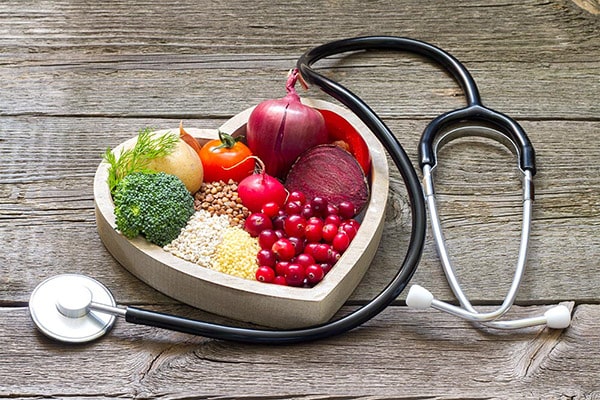


Your grocery shelves are littered with all kinds of foods that are labeled “heart-healthy.” But are they really good for your heart? Or even healthy?
One of the best ways to answer these questions is to read nutrition labels and know the ingredients listed on the packaging. According to a recent study, only 25 percent of consumers actually read these labels and lists. Which means that 75 percent (3 out of 4) people don’t read them at all and are generally clueless about what they are putting into their bodies. When it comes to achieving and maintaining good health, this can easily become a recipe for disaster. After all, poor food choices can lead to high blood pressure, high cholesterol levels, metabolic syndrome, diabetes (high glucose levels), obesity, fatigue and cardiovascular disease.
A healthy diet is key to a healthy heart
Eating a healthy diet and adopting a healthy lifestyle are your best weapons in the fight against cardiovascular disease. Even if you eat lots of food, your body may not be getting the nutrients it needs for good health. Nutrient-rich foods contain minerals, protein, whole grains and other nutrients but are generally lower in calories. Nutrient-rich foods can help you control your weight, cholesterol levels and high blood pressure. The American Heart Association recommends that you eat an overall healthy diet that emphasizes:
Eat fewer nutrient-poor foods
Limit foods and beverages that are high in calories but low in healthy nutrients. Read Nutrition Facts labels carefully — the Nutrition Facts panel on food packaging tells you how much healthy and unhealthy nutrients are in foods or beverages. Base your daily food selections on these recommendations from the American Heart Association:
Foods to avoid if you want a healthy heart
Here are eight foods you should absolutely avoid if you truly want a healthy heart:
Potato chips, pretzels and other processed, packaged snacks
Even if you know that certain foods can increase your heart disease risk, it’s still tough to change established eating habits. But once you know which foods to eat and which foods to limit, you’ll be well on your way toward a true heart-healthy diet. Here are seven strategies for improving your nutrition and protecting your heart health:
1. Control portion sizes
How much you eat is as important as what you eat. Use a small plate or bowl to control your portions. You can eat larger portions of nutrient-rich foods (fruits and vegetables), and smaller portions of high-calorie, high-sodium foods (refined, processed or fast foods). This strategy alone can improve your diet as well as your heart and waistline.
2. Eat more fruits and vegetables
Fruits and vegetables are low in calories, rich in fiber and good sources of vitamins and minerals. Like other plants or plant-based foods, vegetables and fruits contain nutrients that may help prevent cardiovascular disease. Choose vegetables or fruits as the main ingredients in your recipes. Try delicious alternatives like a vegetable stir-fry or fresh fruits added to salads.
3. Choose whole grains
Whole grains are good sources of fiber and other nutrients that help regulate blood pressure and improve heart health. You can increase the amount of whole grains in a heart-healthy diet by substituting whole grains for refined grains. Try something new by adding whole grain farro, quinoa or barley to your diet.
4. Limit unhealthy fats
Limit saturated and trans fats to reduce your blood cholesterol levels and lower your risk of coronary artery disease. High blood cholesterol levels can cause a buildup of plaques in your arteries. This condition, called atherosclerosis, can increase your risk of high blood pressure, heart attack and stroke. Choose monounsaturated fats such as olive oil and polyunsaturated fats from fish, avocados, nuts and seeds – all good choices for a heart-healthy diet. Monounsaturated and polyunsaturated fats can help lower your blood cholesterol levels.
5. Choose low-fat protein sources
Choose lean meat, poultry, fish, low-fat dairy products and eggs as your best sources of protein. Choose skim milk rather than whole milk and skinless chicken breasts instead of fried chicken. Select fish that is rich in omega-3 fatty acids to reduce blood fats called triglycerides. Other sources are flaxseed, walnuts, soybeans, beans, peas and lentils. They are good sources of protein and contain less fat and zero cholesterol. Substitute plant protein for animal protein to reduce your fat and cholesterol and increase your fiber.
6. Reduce or eliminate salt (sodium)
Salt contributes to high blood pressure, a risk factor for cardiovascular disease. Reducing sodium is an important part of a heart-healthy diet. Although reducing the salt you add to food is good, much of the salt people eat comes from canned and processed foods, soups, baked goods and frozen dinners. Try using dried herbs and spices instead of salt, which can lead to high blood pressure. With chicken, try using rosemary, garlic, or sage. With fish, try dill or tarragon. Vinegar is another way to flavor your food without salt.
7. Give yourself an occasional treat
It’s okay to allow yourself an occasional indulgence such as a candy bar or handful of potato chips. It won’t defeat your heart-healthy diet. Just don’t let it sway you from your overall healthy eating plan. If you make overindulgence the rare exception rather than the rule, you’ll balance your diet over the long haul. It is most important that you eat healthy most of the time. Add these seven strategies to your nutritional life, and you’ll find heart-healthy eating is both achievable and enjoyable.

